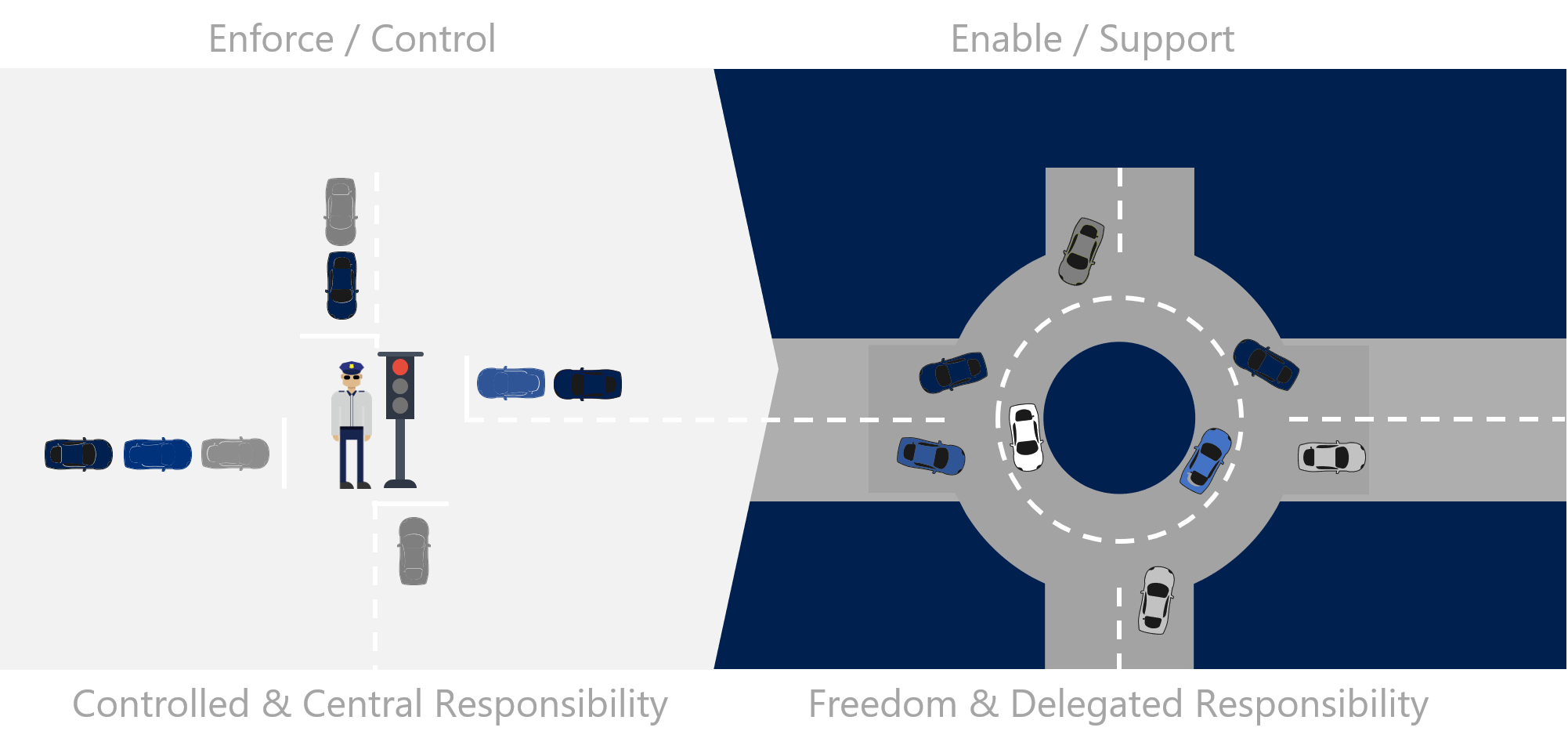Customer narrative
Earlier Microsoft Learn modules for the Cloud Adoption Framework shared the narrative of Tailwind Traders. This module is the next step toward Tailwind's cloud adoption journey. The company is evaluating how its organizational structure should evolve as it undergoes a paradigm shift within its IT operations.
The Tailwind Traders IT team continues to move away from its on-premises datacenters toward the cloud. When IT was largely contained within its own datacenter, the IT team focused on enforcing control. Because a datacenter is only as smart as what an organization invests in it, automation occurred only at rudimentary levels. Creating controls and maintaining the central responsibility structure required a lot of human action.

The preceding image uses cars to represent workloads. Cars traveling over the roads require traffic lights and human beings to direct them. Although this way of working makes sense in an on-premises datacenter world, some companies continue it when they move to the cloud.
However, when a company moves to the cloud, the cloud automatically makes every workload—or in this case, every car—smarter. Each car now has GPS, collision detectors, speed controls, and more, to allow it to navigate the road without human assistance.
Tailwind Traders is excited about this opportunity to shift away from acting as a traffic cop who enforces control. The IT team would rather focus on an "enable and support" mindset and create a cloud center of excellence (CCoE) that can safely accelerate innovation.
By making this shift, the central IT team will invest more of its time on laying out the infrastructure, automated guardrails, and other protections that enable cars to move freely. This effort leads to more freedom and delegates more responsibility to the workload teams so they can make strategic decisions.
In the datacenter model, IT functions typically work independently of each other. Each team creates a boundary, and any changes require human intervention. But that type of workflow can be a barrier to innovation because change control can often take months, perhaps even years.
As Tailwind Traders makes a paradigm shift to enable more freedom and delegated responsibility, the organization looks slightly different. First, it invites cloud strategy leads from the business to help it prioritize and make decisions based on expected business priorities. Second, central IT becomes less critical and the organization begins to shift to a CCoE model.
The organization also begins to rely more on automation. It explores questions such as:
- How do we apply security in a way that ensures our security rules are followed and workload teams know about them?
- How do we create automated guardrails and a cloud governance team so that if somebody breaks a rule, they can't deploy (or can easily follow an approved exception process)?
- How do we build all this on a sound platform like Azure landing zones, with appropriate automation to allow teams to be more agile?
For Tailwind Traders, it's about bringing together the modules that it has already completed to force an organizational shift. The IT team can then support innovation instead of blocking it.